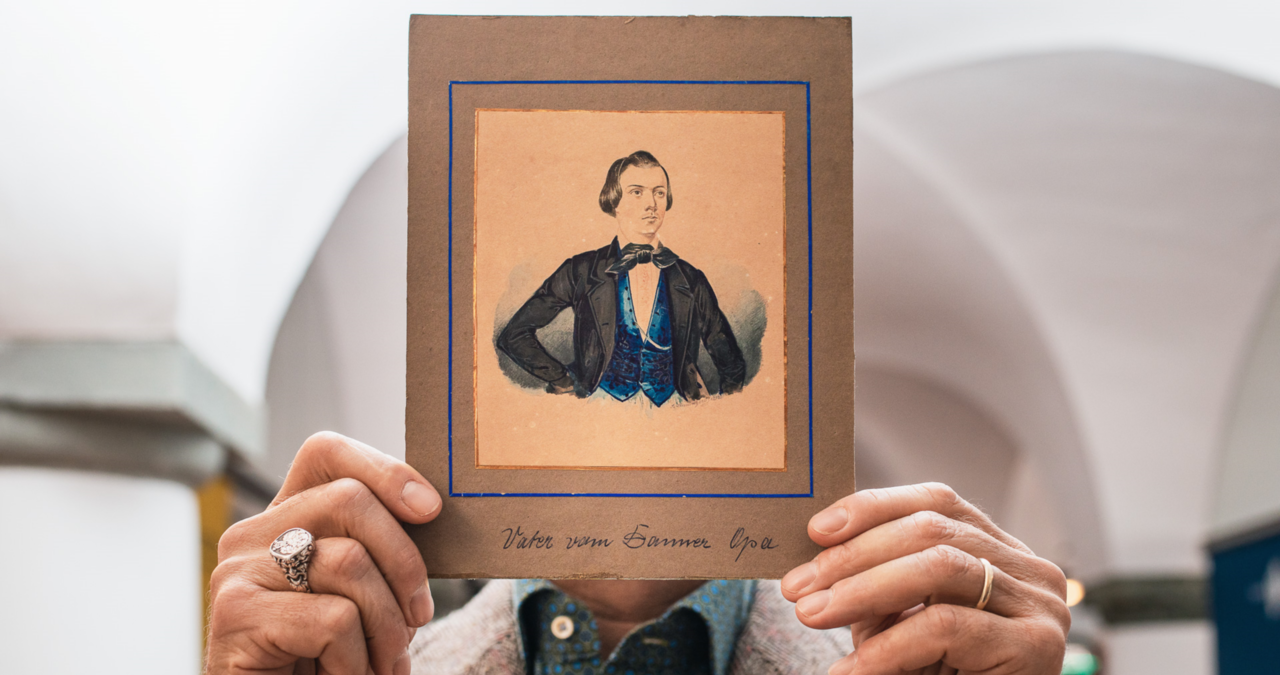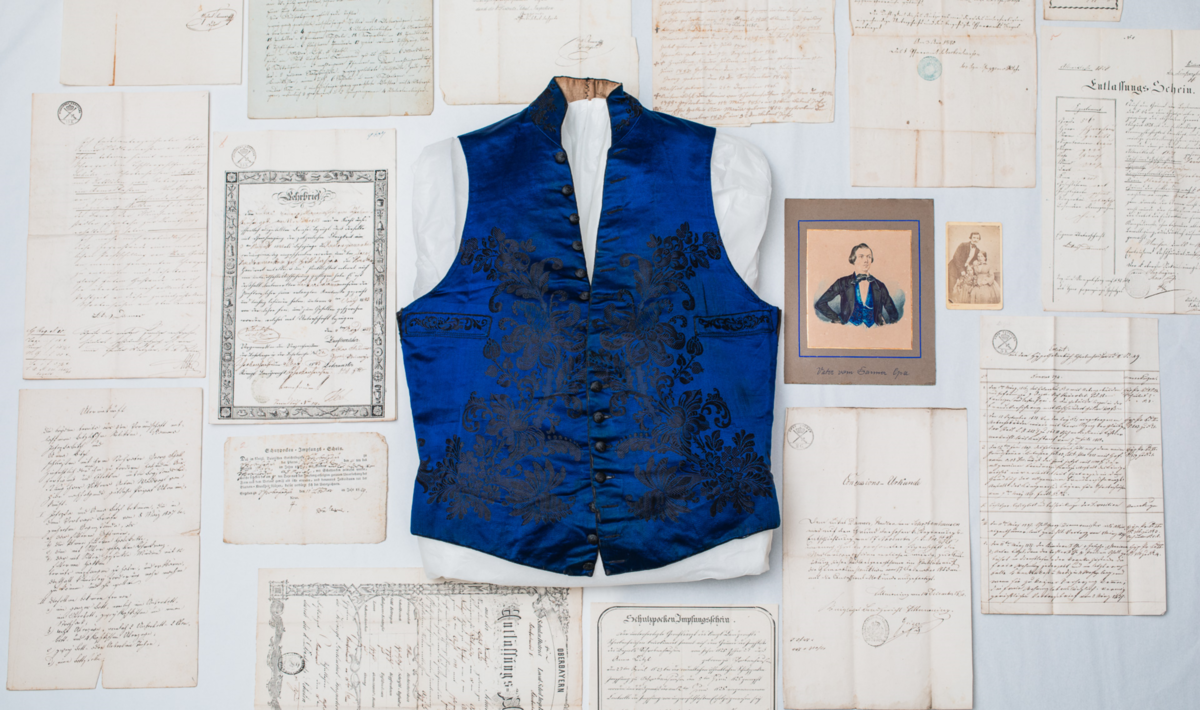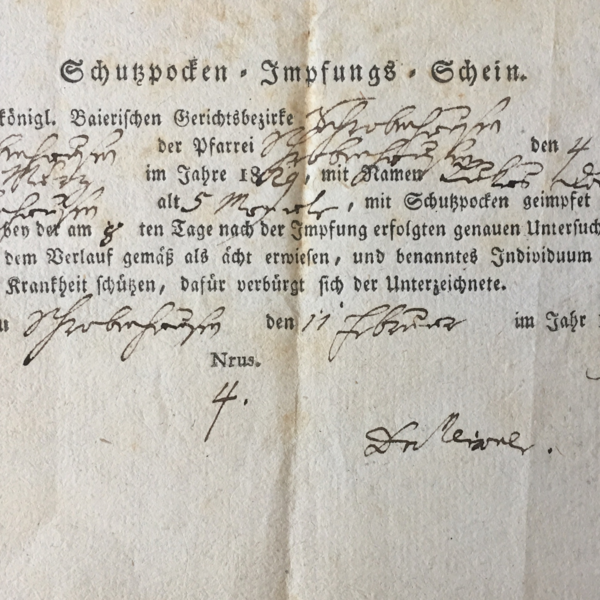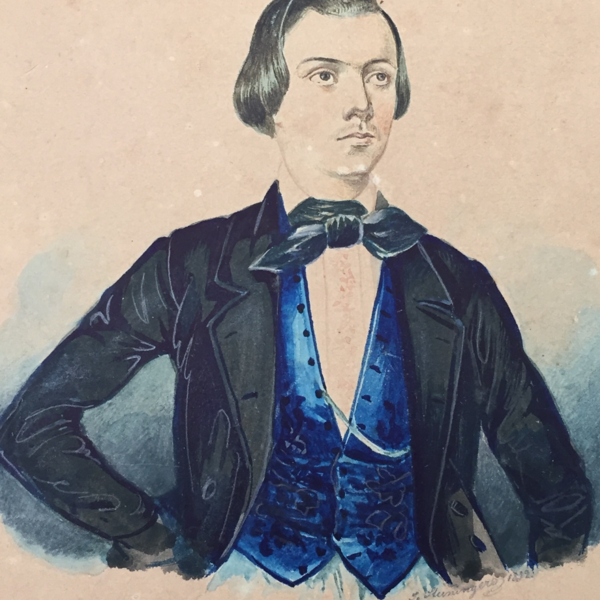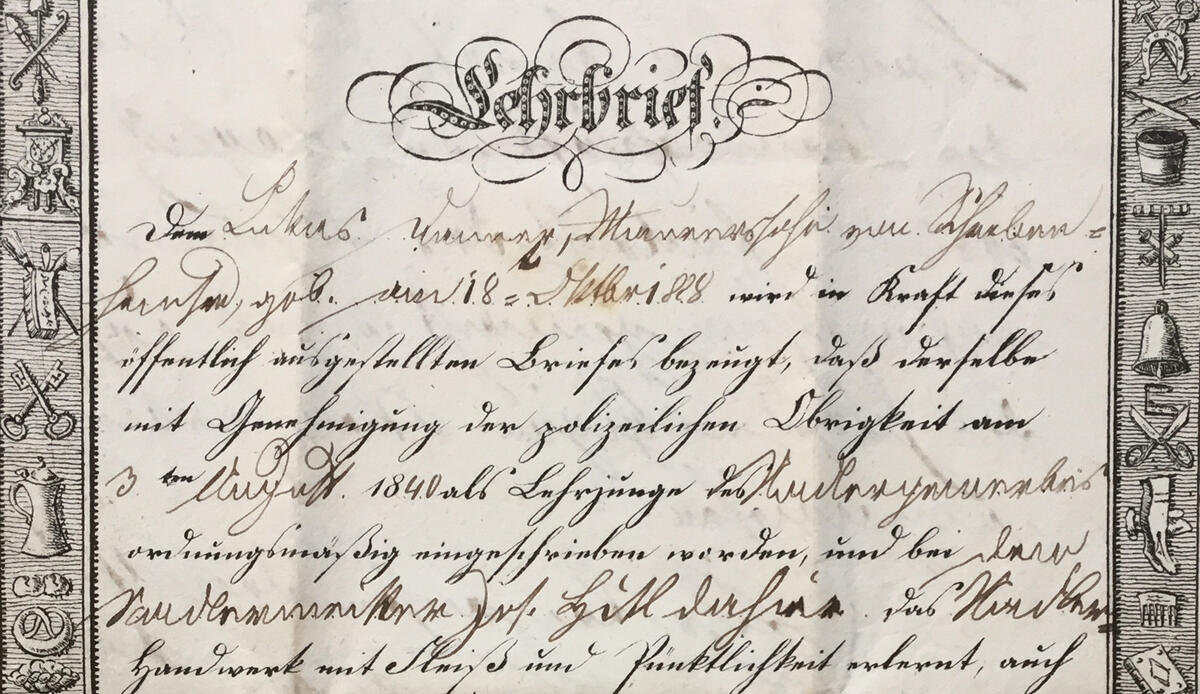The Blue Waistcoat
One example of the many remarkable new acquisitions in our collection is the blue silk waistcoat owned by Lukas Danner. Danner was born in Schrobenhausen in 1828 and died in Tittmoning in 1870. Alongside his Biedermeier hairstyle, Danner’s black frock coat and blue silk waistcoat cut in the latest style are typical of the young needle-maker’s fashionable appearance. The fabric, featuring a black flower pattern, was woven specially for the front of the waistcoat in a weaving tradition that dates back to the second half of the eighteenth century.
This gift to the Centre is rather special, since we have acquired not only a portrait of Lukas Danner together with the original waistcoat but also a large number of archive records documenting his life. Whereas portraits and biographies of members of the aristocracy and the upper classes were preserved quite frequently, surviving examples from the farming or crafts milieu are rather rare. This is what makes the “Danner” items so unusual. They include the birth and death dates of members of his family, his own birth and baptism certificates, school reports and vaccination certificates, his “concession deed” and inventories of his estate. His indenture of apprenticeship as a needle-maker, dated 1843, shows that Lukas Danner began learning this trade at the age of twelve with needle master Hitl in Schrobenhausen and completed it at the age of fifteen.
The documents offer extremely interesting insights into life at that time. Thus, we learn, for example, that Danner was baptised and given the name Lukas on the day of his birth. In times of high infant mortality baptising children into the Christian Church as soon as possible after birth was a precautionary measure to ensure that if they died they did not depart this world as heathens. The “smallpox vaccination certificate”, dated 1829, tells us about the existence of this extremely dangerous viral infectious disease, which our ancestors called simply “the pox” (Blattern). Few people know today that on 26 August 1807 Bavaria became the first country in the world to introduce compulsory vaccination. Following a person’s death it was customary at that time to list all of their possessions in an inventory of their estate. As well as large objects, such as beds and chairs, the inventory also lists in minute detail every piece of crockery and even remnants of fabric. The reason these inventories were so detailed was that they allowed the inheritance to be fairly distributed. They tell us a lot about what people owned in the past, what kind of clothes they wore and how they furnished their homes.



